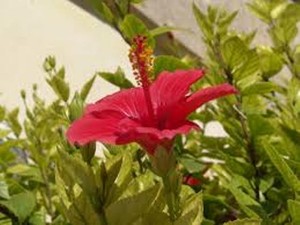11 Jul Thu 2013
Horehound and Horsemint
The tendency to get herbs and their uses mixed up is not unusual at all.That is why it is s especially important to know both the English name and the Latin name of the herb that we are using.In this blog, I want to use two herbs: HORE HOUND and HORSEMINT that may seem the same, but are not.
HOREHOUND(hoarhound)
Marrubium vulgare (white or common horehound) of the MINT FAMILY{Labiatae}
Common name: Marrubium
Description: This is a busy stem, leafy, and branching from the bottom to one or two feet in height. The leaves are roundish-ovate, rough and veiny above, wooly on the under surface, one or two inches in diameter; the flowers are small and white.
Hoar houndoriginated in Europe, North Africa, and Asia, but grows well here in the United States from Maine, to Texas to California and Oregon. It grows on dry sandy fields, waste grounds and road sides, flowering from June to September.The entire plant has a white or hoary appearance; the whole herb is medicinal and should be gathered before its efflorescence. It has a peculiar, rather agreeable, vinous balsamic odor, and a very bitter, aromatic, somewhat acrid and persistent taste.
Hoar hound is used as a stimulant, tonic, weak diaphoretic, decongestant , antiseptic, emmenagogue, expectorant, and weak diuretic. It is used in the form of a syrup, in ordinary colds , coughs, and fevers as well as for hoarseness. The warm infusion will promote perspiration and flow of urine. The cold infusion is an excellent tonic and will act as a purgative in large doses. Useful in many respiratorydisorders, but, specifically inbronchitis and coughs.
In ancient times horehound was used in magic. It was also used for hepatitis, tumors, tuberculosis, typhoid, paratyphoid, snakebite, worms, jaundice and bronchitis; to improve the eyesight, remove obstructions from the liver and spleen. My, my, such an impressive herb!However,recent research has narrowed the benefits of horehound down to just coughs, colds, hoarseness and such.It won’t cure your cold or bronchitis, but, it will relieve your coughing fits and help greatly with hoarseness.
Parts used: leaves and tops.
Horehound drops are a candy/cough medicine made from Marrubium vulgare
WHITE WOOLY HOREHOUND ( Marrubium incanum)this is a perennial, 2 to 3 feet tall and 15 inches wide, with hairy leaves and whorls of white flowers in summer.
Parts used: leaves and flowers for coughs and colds.
BLACK HOREHOUND (Ballota nigra)Labiataea/k/aStinkingHorehound
This is a generally unattractive herb distinguished by its strong and objectionable odor. Thus, the name stinking horehound. This herb is also rejected by cattle.
Native of Europe and United States.Found in wasteland, hedgerows and on walls; prefers nitrogen –rich , moist, rather loose soil.This is generally a wild plant.
This is a strong smelling perennial with angular branched hairy stems, 40-100 cm high, bearing heart-shaped leaves, crenulated, 2-5 cm long, opposite and often turning black after flowering; whorls of typical labiate purple flowers borne in axils; appearing mid summer to late autumn.
Black horehound contains chemicals that affect the brain. There is some concern that black horehound might affect treatment for Parkinson’s disease.
Black horehound may affect the menstrual cycle, and this could threaten the pregnancy
Schizophrenia and psychotic disorders: Black horehound contains chemicals that affect the brain. There is some concern that black horehound might harm people with schizophrenia and psychotic disorders.
GREEK HOREHOUND (Ballota acetabulosa)Lamiaceae familynative to Southeast Greece, Crete, and West Turkey
It is a compact, evergreen subshrub growing to 0.5 metres (20 in). Upright woolly grey shoots turn to rounded grey-green leaves, bearing whorls of small pink flowers with funnel-shaped green calyces in late summer and autumn. It is tolerant of poor soil and drought, and often used in cultivation as groundcover
HORSE MINT (Monarda Punctata) A/K/A Spotted beebalm, Spotted horsemint, Dotted horsemint. Some people have a tendency to use this herb interchangeably with Bee balm or Mountain mint (Pycnanthemum spp), but, even though the BEE BALM, MOUNTAIN MINT and the HORSEMINTare of the MINT FAMILY, they are not one and the same herb.
This is a perennial plant , growing 2 to 6 feethigh; stems are branched, downy leaves 2 to 3 inches long, lanceolate, serrate, punctate.The flowers are actually small and arranged in a whorl around the stem; repeated a great many times up the stalk.Each whorl is subtended by showy bracts - modified leaves that look like flower petals.In dotted horsemint, these bracts range in color from deep lavender to a very pale lavender. The flowers themselves are white with lavender spots.
This appears to be a native Florida herb.
Parts used are the leaves and tops.
Horsemint is aromatic, pungent and bitter and contains volatile oil. It is useful as a carminative and diuretic in flatulent colic and nausea.
The HerbalistbyJoseph E Meyer1932
Rodale’s Iluustrated Encyclopeia of Herbs
Wilflowers in Color by Arthur Stupka
The Encyclopeida of Herbs and HerblismbyMalcom Stuart
Wikipedia, the free encyclopedia

